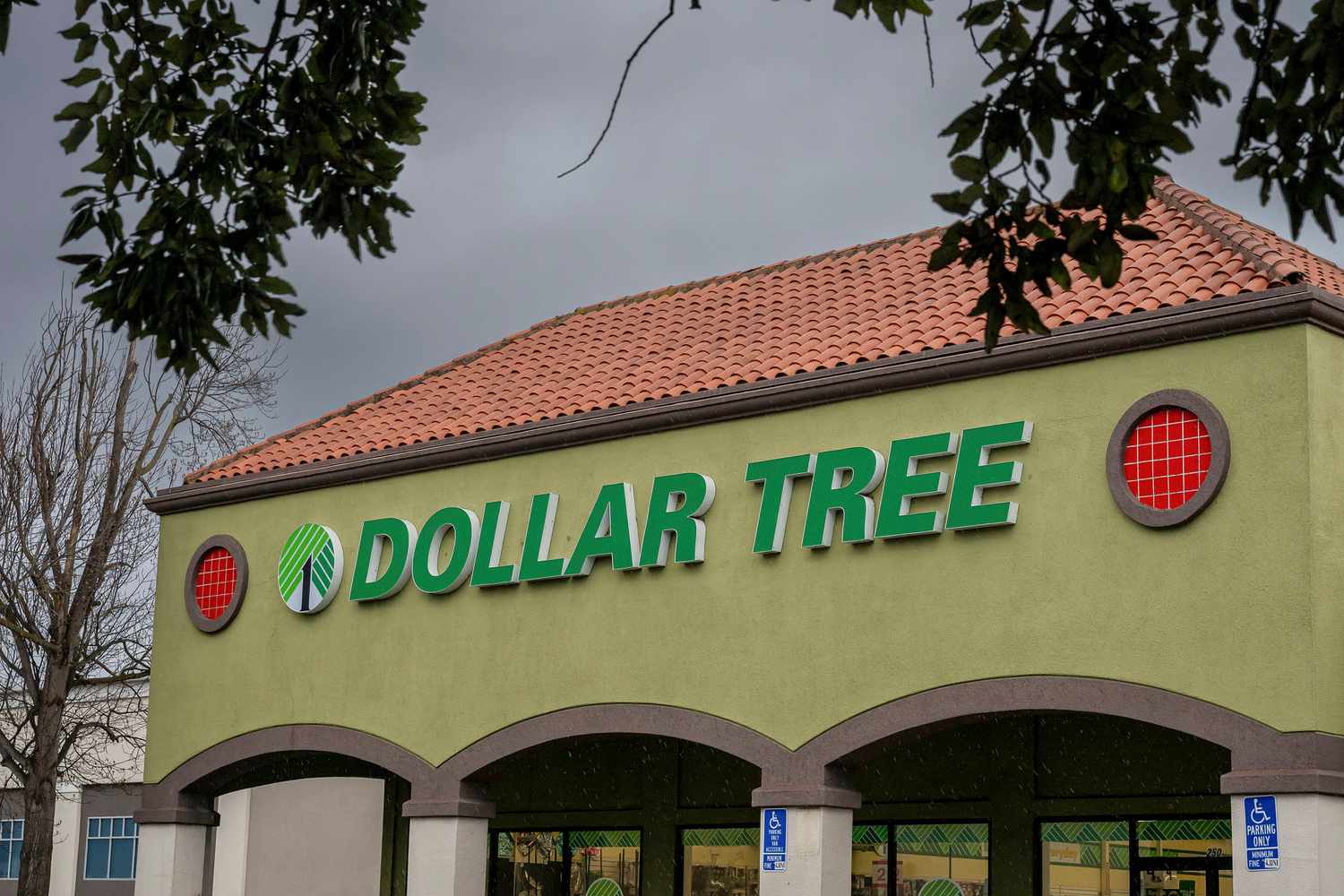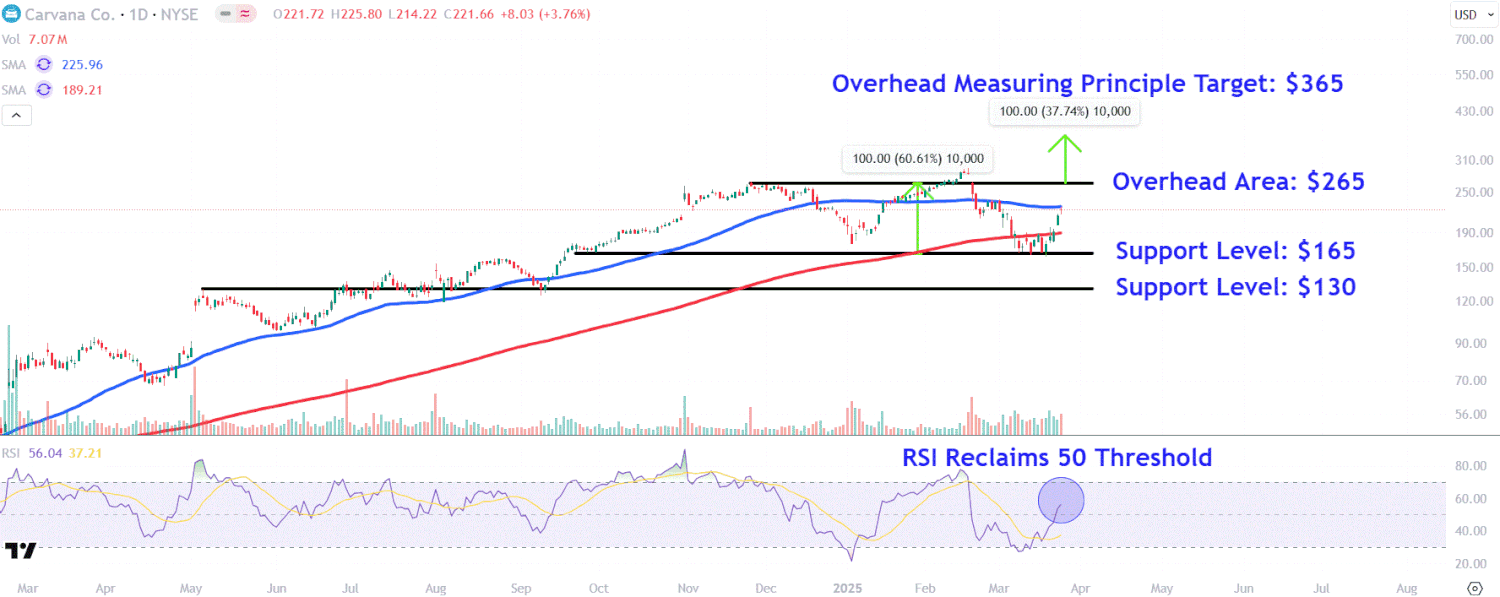Published on March 26th, 2025 by Bob Ciura
The goal of rational investors is to maximize total return under a given set of constraints.
The three components of expected return are:
- Earnings-per-share growth
- Dividend payments
- Expansion/contraction of the valuation multiple
At Sure Dividend, we believe high-quality dividend growth companies represent the best stocks to buy-and-hold for the long run.
This is why we recommend stocks that have established track records of paying dividends, and raising their dividends over time.
Blue-chip stocks are established, financially strong, and consistently profitable publicly traded companies.
Their strength makes them appealing investments for comparatively safe, reliable dividends and capital appreciation versus less established stocks.
This research report has the following resources to help you invest in blue chip stocks:
This list contains important metrics, including: dividend yields, payout ratios, dividend growth rates, 52-week highs and lows, betas, and more.
There are currently more than 500 securities in our blue chip stocks list.
Even better, investors can maximize their portfolio return by purchasing quality dividend stocks when they are undervalued.
This article discusses the 10 best dividend stocks in the Sure Analysis Research Database currently trading within 10% of their 52-week lows.
The list excludes REITs, MLPs, and BDCs. The stocks are arranged by annual expected returns, in ascending order.
Table of Contents
The table of contents below allows for easy navigation.
Beaten Down Dividend Stock #10: Nordson Corp. (NDSN)
- Expected Total Return: 14.5%
Nordson was founded in 1954 in Amherst, Ohio by brothers Eric and Evan Nord, but the company can trace its roots back to 1909 with the U.S. Automatic Company.
Today the company has operations in over 35 countries and engineers, manufactures, and markets products used for dispensing adhesives, coatings, sealants, biomaterials, plastics, and other materials, with applications ranging from diapers and straws to cell phones and aerospace.


Source: Investor Presentation
On December 11th, 2024, Nordson reported fourth quarter results for the period ending October 31st, 2024. For the quarter, the company reported sales of $744 million, 4% higher compared to $719 million in Q4 2023, which was driven by a positive acquisition impact, and offset by organic decrease of 3%.
Industrial Precision saw sales decrease by 3%, while the Medical and Fluid Solutions and Advanced Technology Solutions segments had sales increases of 19% and 5%, respectively.
The company generated adjusted earnings per share of $2.78, a 3% increase compared to the same prior year period.
Click here to download our most recent Sure Analysis report on NDSN (preview of page 1 of 3 shown below):


Beaten Down Dividend Stock #9: Sysco Corp. (SYY)
- Expected Total Return: 14.7%
Sysco Corporation is the largest wholesale food distributor in the United States. The company serves 600,000 locations with food delivery, including restaurants, hospitals, schools, hotels, and other facilities.


Source: Investor Presentation
On January 28th, 2025, Sysco reported second-quarter results for Fiscal Year (FY)2025. The company reported a 4.5% increase in sales for the second quarter of fiscal year 2025, reaching $20.2 billion.
U.S. Foodservice volume grew by 1.4%, while gross profit rose 3.9% to $3.7 billion. Operating income increased 1.7% to $712 million, with adjusted operating income growing 5.1% to $783 million. Earnings per share (EPS) remained at $0.82, while adjusted EPS grew 4.5% to $0.93.
The company reaffirmed its full-year guidance, projecting sales growth of 4%-5% and adjusted EPS growth of 6%-7%.
Click here to download our most recent Sure Analysis report on SYY (preview of page 1 of 3 shown below):


Beaten Down Dividend Stock #8: Archer Daniels Midland (ADM)
- Expected Total Return: 14.9%
Archer-Daniels-Midland is the largest publicly traded farmland product company in the United States. Archer-Daniels-Midland’s businesses include processing cereal grains, oilseeds, and agricultural storage and transportation.


Archer-Daniels-Midland reported its third-quarter results for Fiscal Year (FY) 2024 on November 18th, 2024.
The company reported adjusted net earnings of $530 million and adjusted EPS of $1.09, both down from the prior year due to a $461 million non-cash charge related to its Wilmar equity investment.
Consolidated cash flows year-to-date reached $2.34 billion, reflecting strong operations despite market challenges.
Click here to download our most recent Sure Analysis report on ADM (preview of page 1 of 3 shown below):


Beaten Down Dividend Stock #7: Agilent Technologies (A)
- Expected Total Return: 14.9%
Agilent Technologies, Inc. (A) offers instruments, software, and services to life sciences, diagnostics, and applied chemicals markets. It is a global company with operations in the Americas (which accounted for 40% of FY 2024 revenue), Asia Pacific (33%), and Europe (27%).
The company is separated into three segments: Life Sciences & Diagnostics Markets Group (LDG), Agilent CrossLab Group (ACG), and Applied Markets Group (AMG). ACG makes up nearly half of its total revenue (42%), with LDG (38%) and AMG (20%) making up the remainder.
Its end markets are primarily Chemicals and Advanced Materials, and Pharma, with Diagnostics and Clinical, Environmental & Forensics, Food, and Academia & Govt making up the remainder. Agilent has a market capitalization of $35 billion.
On February 26th, 2025, Agilent reported first quarter 2025 results for the period ending January 31st, 2024. For the quarter, the company generated net revenue of $1.68 billion, which was 1.4% higher year-over-year.
Adjusted net income equaled $377 million or $1.31 per share, a 2% increase compared to Q1 2024. The company’s LDG and ACG segments saw revenue increases of 4% and 1% year-over-year, respectively, while AMG declined 4%.
Click here to download our most recent Sure Analysis report on Agilent (preview of page 1 of 3 shown below):


Beaten Down Dividend Stock #6: PPG Industries (PPG)
- Expected Total Return: 15.2%
PPG Industries is the world’s largest paints and coatings company. Its only competitors of similar size are Sherwin-Williams and Dutch paint company Akzo Nobel.
PPG Industries was founded in 1883 as a manufacturer and distributor of glass (its name stands for Pittsburgh Plate Glass) and today has approximately 3,500 technical employees located in more than 70 countries at 100 locations.
On January 31st, 2025, PPG Industries announced fourth quarter and full year results for the period ending December 31st, 2024. For the quarter, revenue declined 4.6% to $3.73 billion and missed estimates by $241 million.
Adjusted net income of $375 million, or $1.61 per share, compared favorably to adjusted net income of $372 million, or $1.56 per share, in the prior year. Adjusted earnings-per-share was $0.02 below expectations.
For the year, revenue from continuing operations decreased 2% to $15.8 billion while adjusted earnings-per-share totaled $7.87.
PPG Industries repurchased ~$750 million worth of shares during 2024 and has $2.8 billion, or ~10.3% of its current market capitalization, remaining on its share repurchase authorization. The company expects to repurchase ~$400 million worth of shares in Q1 2025.
For 2025, the company expects adjusted earnings-per-share in a range of $7.75 to $8.05.
Click here to download our most recent Sure Analysis report on PPG (preview of page 1 of 3 shown below):


Beaten Down Dividend Stock #5: United Parcel Service (UPS)
- Expected Total Return: 15.3%
United Parcel Service is a logistics and package delivery company that offers services including transportation, distribution, ground freight, ocean freight, insurance, and financing.
Its operations are split into three segments: US Domestic Package, International Package, and Supply Chain & Freight.
On January 30th, 2025, UPS reported fourth quarter 2024 results for the period ending December 31st, 2024. For the quarter, the company generated revenue of $25.3 billion, a 1.5% year-over-year increase.


Source: Investor Presentation
The U.S. Domestic segment (making up 68% of sales) saw a 2.2% revenue increase, with International also posting a 6.9% revenue increase, while Supply Chain Solutions saw a 9.1% decrease. Adjusted net income equaled $2.75 per share, up 11.3% year-over-year.
The company announced it is reducing its largest customer’s volume by over 50% by H2 2026, insourced 100% of its UPS SurePost product, and is redesigning its end-to-end process to deliver $1 billion in savings.
Click here to download our most recent Sure Analysis report on UPS (preview of page 1 of 3 shown below):


Beaten Down Dividend Stock #4: Pfizer Inc. (PFE)
- Expected Total Return: 15.9%
Pfizer Inc. is a global pharmaceutical company focusing on prescription drugs and vaccines. Pfizer formed the GSK Consumer Healthcare Joint Venture in 2019 with GlaxoSmithKline plc, which includes its over-the-counter business.
Pfizer owns 32% of the JV, but is exiting the company, now known as Haleon. Pfizer spun off its Upjohn segment and merged it with Mylan forming Viatris for its off patent, branded and generic medicines in 2020.
Pfizer’s top products are Eliquis, Ibrance, Prevnar family, Vyndaqel family, Abrysvo, Xeljanz, and Comirnaty.


Source: Investor Presentation
Pfizer’s current product line is expected to produce top line and bottom-line growth because of significant R&D and acquisitions.
Pfizer reported solid Q4 2024 results on February 4th, 2025. Company-wide revenue grew 21% operationally and adjusted diluted earnings per share climbed to $0.63 versus $0.10 on a year-over-year basis because of stabilizing COVID-19 related sales, growing revenue from the existing portfolio, and lower expenses.
Global Biopharmaceuticals sales gained 22% to $17,413M from $14,186M led by gains in Primary Care (+27%), Specialty Care (+12%), and Oncology (+27%). Pfizer Centerone saw 11% lower sales to $325M, while Ignite revenue was $26M.
Of the top selling drugs, sales increased for Eliquis (+14%), Prevnar (-4%), Plaxlovid (flat), Cominraty (-37%), Vyndaqel/ Vyndamax (+61%), Ibrance (-2%), and Xtandi (+24).
Click here to download our most recent Sure Analysis report on PFE (preview of page 1 of 3 shown below):


Beaten Down Dividend Stock #3: PepsiCo Inc. (PEP)
- Expected Total Return: 16.3%
PepsiCo is a global food and beverage company. Its products include Pepsi, Mountain Dew, Frito-Lay chips, Gatorade, Tropicana orange juice and Quaker foods.
Its business is split roughly 60-40 in terms of food and beverage revenue. It is also balanced geographically between the U.S. and the rest of the world.


Source: Investor Presentation
On February 4th, 2025, PepsiCo announced that it would increase its annualized dividend by 5.0% to $5.69 starting with the payment that was made in June 2025, extending the company’s dividend growth streak to 53 consecutive years.
That same day, PepsiCo announced fourth quarter and full year results for the period ending December 31st, 2025. For the quarter, revenue decreased 0.3% to $27.8 billion, which was $110 million below estimates.
Adjusted earnings-per-share of $1.96 compared favorably to $1.78 the prior year and was $0.02 better than excepted.
For the year, revenue grew 0.4% to $91.9 billion while adjusted earnings-per-share of $8.16 compared to $7.62 in 2023. Currency exchange reduced revenue by 2% and earnings-per-share by 4%.
Click here to download our most recent Sure Analysis report on PEP (preview of page 1 of 3 shown below):


Beaten Down Dividend Stock #2: Estee Lauder Cos. (EL)
- Expected Total Return: 16.9%
Estee Lauder is one of the world’s largest cosmetics and beauty care companies. It competes primarily in the upscale and prestige portion of the market. Sales break down as follows: Skin care makes up 52% of sales, makeup constitutes 28%, fragrance is another 16%, and hair care is the other 4%.
Leading brands include the namesake Estee Lauder along with Clinique, Aveda, M.A.C., and Origins among others. Estee Lauder is a truly international firm, operating in more than 150 countries.
Generally, revenues are split almost equally in thirds between the Asia-Pacific, Europe Middle East & Africa, and the Americas segments though Asia-Pacific is underperforming at the moment.
Estee Lauder has historically shown strong and consistent growth, with top-line revenues growing from $11.0 billion in 2014 to $17.7 billion in 2022. The firm’s strong branding and distribution network makes Estee Lauder a dominant competitor in most markets.
The company reported its Q2 2025 results on February 4th, 2025. Adjusted earnings-per-share of 62 cents fell from the $0.88 for the same period of last year, but greatly exceeded expectations of just 32 cents. Revenues of $4.0 billion decreased 6% year-over-year but beat expectations.
Click here to download our most recent Sure Analysis report on EL (preview of page 1 of 3 shown below):


Beaten Down Dividend Stock #1: Eversource Energy (ES)
- Expected Total Return: 19.7%
Eversource Energy is a diversified holding company with subsidiaries that provide regulated electric, gas, and water distribution service in the Northeast U.S.
FactSet, Erie Indemnity, and Eversource Energy are the three new Dividend Aristocrats for 2025.
The company’s utilities serve more than 4 million customers after acquiring NStar’s Massachusetts utilities in 2012, Aquarion in 2017, and Columbia Gas in 2020.
Eversource has delivered steady growth to shareholders for many years.


Source: Investor Presentation
On February 11th, 2025, Eversource Energy released its fourth-quarter and full-year 2024 results. For the quarter, the company reported net earnings of $72.5 million, a significant improvement from a net loss of $(1,288.5) million in the same quarter of last year, which reflected the impact of the company’s exit from offshore wind investments.
The company reported earnings per share of $0.20, compared with a loss per share of $(3.68) in the prior year. For the full year 2024, Eversource reported GAAP earnings of $811.7 million, or $2.27 per share, compared with a full-year 2023 loss of $(442.2) million, or $(1.26) per share.
On a non-GAAP recurring basis, the company earned $1,634.0 million, or $4.57 per share, representing a 5.3% increase from 2023.
Click here to download our most recent Sure Analysis report on ES (preview of page 1 of 3 shown below):


Other Blue Chip Stock Resources
The resources below will give you a better understanding of dividend growth investing:
Thanks for reading this article. Please send any feedback, corrections, or questions to [email protected].







































